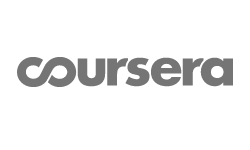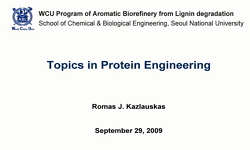영 유아의 정상적인 성장과 발육에 도움을 줄 수 있는 영 유아용 조제식의 영양적 완전성을 강화하기 위하여 우리나라, CODEX, 미국, 일본, EU, 호주 및 뉴질랜드의 관련법령 및 개선안을 비교 ...
http://chineseinput.net/에서 pinyin(병음)방식으로 중국어를 변환할 수 있습니다.
변환된 중국어를 복사하여 사용하시면 됩니다.
- 中文 을 입력하시려면 zhongwen을 입력하시고 space를누르시면됩니다.
- 北京 을 입력하시려면 beijing을 입력하시고 space를 누르시면 됩니다.


우리나라 영.유아용 조제식의 영양소 규격기준 개선방안 연구 = A Study on the Amendment Scheme of Nutrient Standard Regulations for Infant Formula in Korea
한글로보기https://www.riss.kr/link?id=A103699639
-
저자
엄애선 ; 이헌옥 ; 문지혜 ; 심재영 ; 김인혜 ; 원선임 ; 나영아 ; 최윤주 ; 이혜영 ; 박혜경 ; 김명철 ; Om, Ae-Son ; Lee, Heon-Ok ; Moon, Ji-Hea ; Shim, Jae-Young ; Kim, In-Hye ; Won, Sun-Im ; Rha, Young-Ah ; Choi, Yun-Ju ; Lee, Hye-Young ; Park, Hye-Kyung ; Kim, Myung-Chul
- 발행기관
- 학술지명
- 권호사항
-
발행연도
2007
-
작성언어
Korean
- 주제어
-
등재정보
KCI등재,SCOPUS
-
자료형태
학술저널
- 발행기관 URL
-
수록면
569-577(9쪽)
-
KCI 피인용횟수
1
- 제공처
- 소장기관
-
0
상세조회 -
0
다운로드
부가정보
국문 초록 (Abstract)
영 유아의 정상적인 성장과 발육에 도움을 줄 수 있는 영 유아용 조제식의 영양적 완전성을 강화하기 위하여 우리나라, CODEX, 미국, 일본, EU, 호주 및 뉴질랜드의 관련법령 및 개선안을 비교 분석 후, 우리나라 영 유아용 조제식의 규격기준의 개선방안을 다음과 같이 제시하고자 한다. 조제유류와 영아용 조제식으로 이원화된 기준을 CODEX 규격안과 같이 '영 유아용 조제식'으로 통합하고 사용 대상을 6개월 이내의 영 유아로 한정하도록 제시한다. 영 유아용 조제식의 유단백질에 대한 질소계수를 CODEX 규격안과 동일한 수준으로 변경하고, 단백질 급원에 따른 함량별 차이와 모유내의 필수아미노산 성분을 단백질 함량 규격에 제시한다. 또한 영 유아를 위한 필수지방산인 $\alpha$-linolenic acid, DHA와 EPA, trans fatty acid 함유량을 지방 함량 규격에 제시한다. 영 유아용 조제식의 비타민과 무기질 및 기타 영양소의 성분기준을 선진국과 동일한 중량(100 g)당에서 에너지(100 kcal)당 영양소 함량으로 개선하도록 제시한다. 현행 규격에는 일부 비타민(비타민 A, D)과 무기질(나트륨, 칼륨 및 염소)의 최대값만 지정되어 있으므로 모든 비타민과 무기질의 최대값을 설정하도록 제시한다. CODEX 규격안, EU, 호주 및 뉴질랜드 영 유아용 조제식 관련 규격에서 제시한 모유내 면역증진성분으로 알려진 nucleotide 5종(cytidine, uridine, adenosine, guanosine, inosine 5'-monophosphate)과 치아 건강 유지에 도움이 되는 불소의 함량 규격을 설정하도록 제시한다.
다국어 초록 (Multilingual Abstract)
The purpose of the present study was to propose some amendments on nutrient standard regulations of infant formula in Korea. For this purpose, we compared and analyzed the nutrient regulations of Korea, CODEX, U.S.A, Japan, EU, Australia and New Zeala...
The purpose of the present study was to propose some amendments on nutrient standard regulations of infant formula in Korea. For this purpose, we compared and analyzed the nutrient regulations of Korea, CODEX, U.S.A, Japan, EU, Australia and New Zealand. Some developing aspects of Korea's nutrient standard regulations for infant formula need to be examined as follows: firstly, both milk-based formula and soy-based formula standards would be unified into an infant formula, and the user of infant formula would be categorized for babies less than 6 month old. Secondly, nitrogen conversion factor of milk protein in the infant formula would be 6.38, which is the same as that of CODEX Revised Standard. Protein quantities could be differentiated by protein sources, and essential amino acids in human milk would be standardized according to protein contents. Thirdly, $\alpha$-linolenic acid, docosahexaenoic acid (DHA), and eicosapentaenoic acid (EPA) as essential fatty acids and trans fatty acid would be standardized in terms of the contents. Fourthly, it is recommended that the unit of vitamins and minerals would be changed from g/100 g to g/100 kcal, and individual vitamins and mineral would have their maximum values. Finally, 5 nucleotides (cytidine, uridine, adenosine, guanosine, inosine 5'-monophosphate) and fluoride would be required for the strengthening the immunity and the development of teeth, respectively. In conclusion, the scientific studies on amendment scheme of nutrient standard regulations of infant formula is very important to fortify nutritional completeness for Korean infants and young children.
참고문헌 (Reference)
1 노경희, "한국인 상용 가공식품의 trans 지방산 이성체" 한국식품영양과학회 32 (32): 325-337, 2003
2 곽병만, "신속추출법 및 PDA-HPLC에 의한 조제분유 중 비타민 A, E의 동시분석" 한국식품과학회 36 (36): 189-195, 2004
3 이조윤, "냉장 및 실온 보존에 따른 모유와 환원조제분유 중의 총균수와 대장균수의 변화" 한국식품영양과학회 31 (31): 433-437, 2002
4 健康增進法, "厚生勞動性" 2003
5 "乳児用調製粉乳の表示許可の取扱いについて"
6 Kim SH, "Trans fatty acids effects in human" 6 : 45-52, 2001
7 Park YH, "The fundamental studies of heat treatment class in domestic infant formula" 27 : 495-500, 1998
8 Kim DY, "Study on the establishment of nutrient requirements for infant formula" 1 : 28-40, 1996
9 Kim DY, "Study on the establishment of nutrient requirements for commercial supplementary foods for infants and young children" 2 : 624-632, 1997
10 Australia New Zealand, "Standard 2.9.1 Infant formula products"
1 노경희, "한국인 상용 가공식품의 trans 지방산 이성체" 한국식품영양과학회 32 (32): 325-337, 2003
2 곽병만, "신속추출법 및 PDA-HPLC에 의한 조제분유 중 비타민 A, E의 동시분석" 한국식품과학회 36 (36): 189-195, 2004
3 이조윤, "냉장 및 실온 보존에 따른 모유와 환원조제분유 중의 총균수와 대장균수의 변화" 한국식품영양과학회 31 (31): 433-437, 2002
4 健康增進法, "厚生勞動性" 2003
5 "乳児用調製粉乳の表示許可の取扱いについて"
6 Kim SH, "Trans fatty acids effects in human" 6 : 45-52, 2001
7 Park YH, "The fundamental studies of heat treatment class in domestic infant formula" 27 : 495-500, 1998
8 Kim DY, "Study on the establishment of nutrient requirements for infant formula" 1 : 28-40, 1996
9 Kim DY, "Study on the establishment of nutrient requirements for commercial supplementary foods for infants and young children" 2 : 624-632, 1997
10 Australia New Zealand, "Standard 2.9.1 Infant formula products"
11 Australia New Zealand, "Standard 1.6.1 Microbiological limits for food"
12 Australia New Zealand, "Standard 1.3.1 Food additives"
13 Park SW, "Simultaneous determination of water-soluble vitamins in infant dried milk formulations by high performance liquid chromatography with UV detector" 25 : 41-46, 2001
14 Yu V, "Scientific rationale and benefits of nucleotide supplementation of infant formula" 38 : 543-549, 2002
15 Kwon KS, "Risk assessment and prevention of pathogenic microorganisms in powdered infant formula" 39 : 24-29, 2006
16 Cheon SL, "Recent study about infant formula" 4 : 61-78, 1986
17 Bosscher D, "Recent advances in the development of infant formulas : Mimicking the effects of breast feeding" 18 : 522-523, 2002
18 Mi-Kyoung Jung, "Prevalence and Thermal Stability of Enterobacter sakazakii fromUnprocessed Ready-to-Eat Agricultural Products and Powdered InfantFormulas" 한국식품과학회 15 (15): 152-157, 2006
19 Lee SI, "Nutrition for infants and children" Kyomunsa 7-188, 2002
20 Choi SH, "Microbiological safety of infant formula and baby food" 23 : 65-71, 2005
21 Kim HS, "Meal solution for infants and toddlers : cookwise approach" 19 : 110-121, 2003
22 Lim HS, "Lipid and fatty acid composition of Korean breast milk and infant formula" 27 : 563-573, 1994
23 KFDA, "Korea Food Code"
24 KFDA, "Korea Food Additives Code"
25 Mi Kyung Yoo, "Isolation and Genotyping of Enterobacter sakazakii from Powdered Infant Formula Manufactured in Korea" 한국식품과학회 14 (14): 875-877, 2005
26 Aggett P, "Innovation in infant formula development : A reassessment of ribonucleotides in 2002" 19 : 375-384, 2003
27 Pastor N, "Infants fed docosahexaenoic acid-and arachidonic acid-supplemented formula have decreased incidence of brohchiolitis/bronchitis the first year of life" 45 : 850-855, 2006
28 Choi HM, "Essentials of Nutrition" Kyomunsa 243-247, 2003
29 Jørgensen MH, "Effect of formula supplemented with docosahexaenoic acid and γ-linolenic acid on fatty acid status and visual acuity in term infants" 26 : 412-421, 1998
30 CODEX, "Draft revised standard for infant formula and formulas for special medical purpose intended for infants. In Codex 30th Session" CODEX Alimentarius Commission 46-63, 2006
31 Park YH, "Comparison of the heat treatment intensity in infant formulae" 23 : 627-632, 1991
32 EU, "Commission Directive 96/4/EC on infant formulae and follow-on formulae"
33 EU, "Commission Directive 91/321/EEC on infant formulae and follow-on formulae"
34 EU, "Commission Directive 2003/14/EC on infant formulae and follow-on formulae"
35 EU, "Commission Directive 1999/50/EC on infant formulae and follow-on formulae"
36 Han JE, "Chemical quality evaluation of commercial infant formulas" 21 : 56-63, 2001
37 CODEX, "CODEX Standard for infant formula" CODEX Alimentarius Commission 1981
38 전장영, "AAS 및 ICP-AES에 의한 조제분유 중 칼슘 함량 분석의 측정불확도 산정" 한국식품과학회 36 (36): 701-710, 2004
39 FDA, "21 CFR Parts 106 and 107 current good manufacturing practice, quality control procedures, quality factors, notification requirements, and records and reports, for the production of infant formula; Proposed rule"
40 FDA, "21 CFR Part 107 - Infant formula"
41 FDA, "21 CFR Part 106 - Infant formula quality control procedures" 2006
동일학술지(권/호) 다른 논문
-
한우등심의 영양성분 및 기호성에 미치는 감귤부산물 TMR 사료의 영향
- 한국식품영양과학회
- 정인철
- 2007
- KCI등재,SCOPUS
-
키토산 처리가 콩나물의 Soyasaponin 함량변화에 미치는 효과
- 한국식품영양과학회
- 오봉윤
- 2007
- KCI등재,SCOPUS
-
Synergist로서 사용된 식품첨가물이 된장모델액의 갈변억제에 미치는 영향
- 한국식품영양과학회
- 곽은정
- 2007
- KCI등재,SCOPUS
-
- 한국식품영양과학회
- 오현석
- 2007
- KCI등재,SCOPUS
분석정보
인용정보 인용지수 설명보기
학술지 이력
| 연월일 | 이력구분 | 이력상세 | 등재구분 |
|---|---|---|---|
| 2023 | 평가예정 | 해외DB학술지평가 신청대상 (해외등재 학술지 평가) | |
| 2020-01-01 | 평가 | 등재학술지 유지 (해외등재 학술지 평가) |  |
| 2014-06-24 | 학회명변경 | 한글명 : 한국식품영양과학회지 -> 한국식품영양과학회영문명 : Journal of the Korean Society of Food Science and Nutrition -> The Korean Society of Food Science and Nutrition |  |
| 2014-04-02 | 학회명변경 | 한글명 : 한국식품영양과학회 -> 한국식품영양과학회지영문명 : 미등록 -> Journal of the Korean Society of Food Science and Nutrition |  |
| 2011-01-01 | 평가 | 등재학술지 유지 (등재유지) |  |
| 2009-01-01 | 평가 | 등재학술지 유지 (등재유지) |  |
| 2007-01-01 | 평가 | 등재학술지 유지 (등재유지) |  |
| 2005-01-01 | 평가 | 등재학술지 유지 (등재유지) |  |
| 2002-07-01 | 평가 | 등재학술지 선정 (등재후보2차) |  |
| 2000-01-01 | 평가 | 등재후보학술지 선정 (신규평가) |  |
학술지 인용정보
| 기준연도 | WOS-KCI 통합IF(2년) | KCIF(2년) | KCIF(3년) |
|---|---|---|---|
| 2016 | 1.03 | 1.03 | 1.13 |
| KCIF(4년) | KCIF(5년) | 중심성지수(3년) | 즉시성지수 |
| 1.18 | 1.2 | 1.993 | 0.21 |
연관 공개강의(KOCW)
-

Prion Protein Dynamics and Prion Diseases
연세대학교 쿠르트 뷔트리히 -

Isolation and Characterization of Plasmodesmal Proteins : A Tortuous ,But Rewarding Road!
경상국립대학교 루카스 윌리엄 -

NMR with Proteins in Solution
연세대학교 쿠르트 뷔트리히 -

DNA와 단백질에서 돌연변이 발견(생물정보학 VI)
COURSERA Pavel Pevzner, Phillip Compeau -

단백질공학 특강
서울대학교 로마스 카즐라우스커스




 ScienceON
ScienceON


